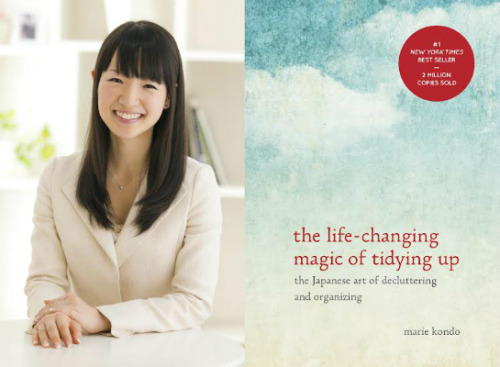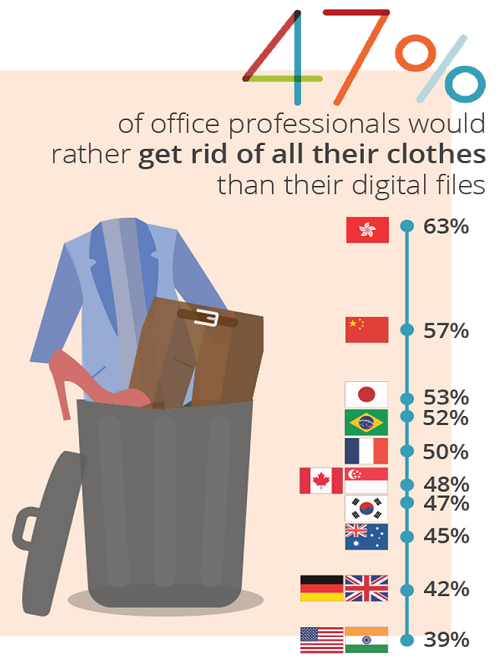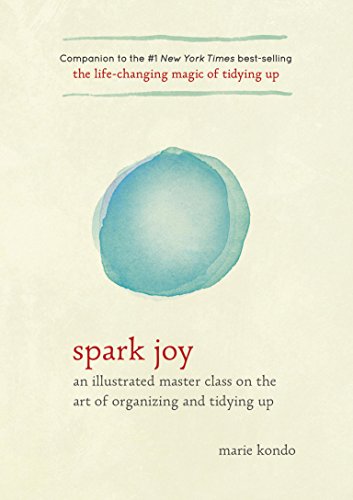Have you read the life changing magic of tidying up, or Spark Joy, books by Marie Kondo? Her new Netflix series, Tidying Up with Marie Kondo debuted on January 1, and has enjoyed passionate early viewership by consumers in America who are among the world’s major hoarders.
 If you opened any pop culture magazine or newspaper in the past week, you probably saw the results of a PR blitz promoting KonMari, the trademarked name for Marie’s clean-out method. As an example, the Wall Street Journal discussed the phenomenon in Ben Zimmer’s profile, “A Guru of Organizing Becomes A Verb” published this weekend in the Journal.
If you opened any pop culture magazine or newspaper in the past week, you probably saw the results of a PR blitz promoting KonMari, the trademarked name for Marie’s clean-out method. As an example, the Wall Street Journal discussed the phenomenon in Ben Zimmer’s profile, “A Guru of Organizing Becomes A Verb” published this weekend in the Journal.
Marie is all about de-cluttering, organizing, and finding joy in our physical environments.
As a fan of Kondo-ing and Marie’s message of “sparking joy” with the items you live with, it leads me to ask: what lessons can KonMari have for U.S. healthcare?
Here are some of my favorite quotes of Marie’s that translate to health care…
”Tidying ought to be the act of restoring balance on people, possessions, and the home they live in.”
Consider how labyrinthine health care processes are, whether we look at patient “journeys” (a nice word for the Rube Goldbergian experience of being a sick patient in the U.S.) or physician workflows. What forms might “tidying up” these processes take?
“When we really delve into the reasons for why we can’t let something go, there are only two: an attachment to the past or a fear for the future.”
Through my years advising health care providers, both hospital settings and physicians’, I’ve observed that new devices brought into an institution are additive and too often do not replace old technologies. I think a lot about fax machines in this way: yet providers are still highly dependent on faxing, as I’ve learned from people in my Twitter feed who are quick to remind me this.
Many technologies may be comforting in the immediate term, but could also be preventing innovation at the edge. When is the right time to “jump the curve?” to the new world or workflow as my great mentor Ian Morrison asked in his book, The Second Curve.
 Here, I would also add the challenge of data hoarding. There are people who believe that owning “all” the data is the end-game; these folks haven’t cottoned onto Open Source or cloud-sharing or network effects. Underneath this could be fear about securing data; but that, too, can be addressed. Globally, nearly one-half of people working in offices would rather get rid of their clothes than their digital files (39% in the U.S.). Read this insightful article on data hoarding to spot the opportunity for cleaning up and, I daresay, sharing and securing data.
Here, I would also add the challenge of data hoarding. There are people who believe that owning “all” the data is the end-game; these folks haven’t cottoned onto Open Source or cloud-sharing or network effects. Underneath this could be fear about securing data; but that, too, can be addressed. Globally, nearly one-half of people working in offices would rather get rid of their clothes than their digital files (39% in the U.S.). Read this insightful article on data hoarding to spot the opportunity for cleaning up and, I daresay, sharing and securing data.
If you don’t believe me, here’s a just-published article in Forbes about the importance of data-sharing to improve health care, presenting the persuasive case for The Chain of Survival in Healthcare. The piece is written by a consulting anesthesiologist with the National Health Service in the UK, @docsouthey.
”People cannot change their habits without first changing their way of thinking.”
Marie raises a good point: I would translate this as, “health care stakeholders in the U.S. need cognitive therapy.” There is so much that can be done with the amazing human capital on the front lines of health care in America – the nurses, the physicians and the pharmacists who happen to be the most trusted professions in the country, Gallup tells us. Liberating people to work at their highest and best use can help us address clinician burnout and the Quadruple Aim, while supporting shared decision-making between patients and their clinicians.
This mind-shift can also help legacy health care look at workflows and journeys through patients’ eyes – patients as consumers and payors. These are the pivotal roles of user-centered designers and service designers.
Health Populi’s Hot Points: “There are three approaches we can take toward our possessions: face them now, face them sometime, or avoid them until the day we die.”
This last quote is the change-or-else manifesto that the likes of Clay Christensen and Jeff Bezos challenge. Instead of “possessions,” I think about “business model” and “workflow.” They are inter-related.
Imagine a hospital closing beds and shifting workflow to virtual care via telehealth channels. For health care providers, telehealth and virtual care are converging with healthcare delivery the we used to compartmentalize “e-business.” Today, e-business is just stuff done via ecommerce or online or via cloud computing….just everyday business flows. At places like Mercy (Virtual) Healthcare, Kaiser-Permanente (which conducts over 50% of their visits virtually) and Intermountain Healthcare, telehealth is just a new normal in health care delivery.
Ultimately, a Holy Grail would be to “spark joy” in health care, per Marie Kondo’s vision. While health care in America isn’t universally joy-ful or joy-inducing, there are examples of health systems prioritizing the starring roles of patients and clinicians, and streamlining design to de-clutter experience for all.
 For further reading on how to “Kondo” your life, here are a few articles I’ve found useful and/or interesting:
For further reading on how to “Kondo” your life, here are a few articles I’ve found useful and/or interesting:
How to de-clutter your computer, inside and out, from NBC News Better
How to KonMari your way to a happier digital life, PC Mag
The life-changing magic of tidying up your electronic life, Mother Nature News (MNN)
How to tidy your PC, Marie Kondo style, Techradar
Could Marie Kondo slow down fast fashion, Fortune
The post What If Marie Kondo Reorganized Health Care in the U.S.? appeared first on HealthPopuli.com.
What If Marie Kondo Reorganized Health Care in the U.S.? posted first on http://dentistfortworth.blogspot.com
No comments:
Post a Comment